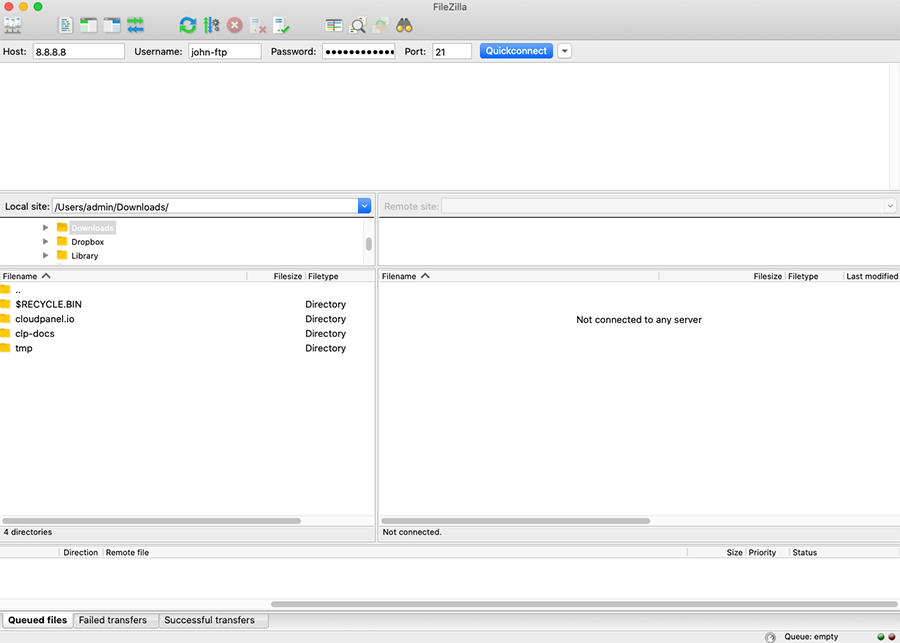Users
CloudPanel v1 is obsolete
CloudPanel v1 is obsolete; check out the CloudPanel v2 Docs.
On this page you will find information about SSH/SFTP and FTP Users.
SSH/SFTP
The SSH protocol (also referred to as Secure Shell) is a method for secure remote login from one computer to another. It provides several alternative options for strong authentication, and it protects the communications security and integrity with strong encryption.
Adding a User
To add a new SSH User click on the tab SSH Users and then on the button Add User top right.
Enter a User Name and a strong Password. CloudPanel automatically adds the suffix -ssh at the end of the User Name to prevent conflicts with system users. The Password needs to be at least six characters long; the longer, the better.
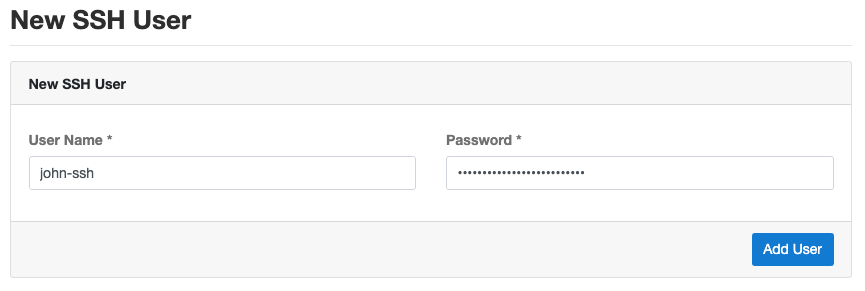
Deleting a User
To delete a SSH User click on the button Delete on the overview page.

warning
The entire home directory of the user will be deleted, in that example /home/john-ssh/
Password Change
The password for a user can be changed in user view. Enter your new password and click on the button Update.
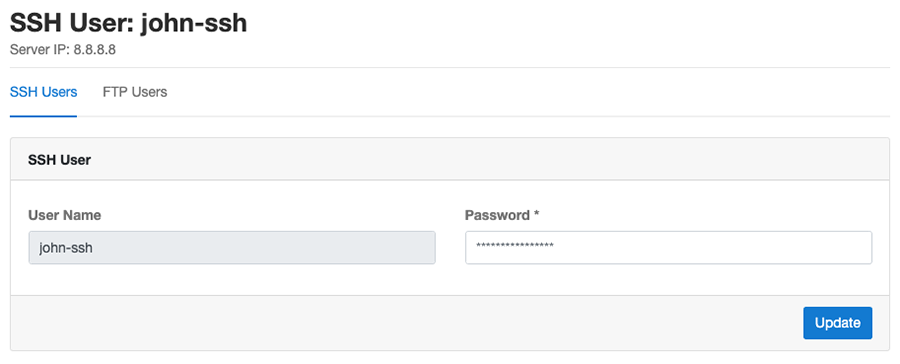
The password can also be changed on the command line. After login with SSH enter the following command:
As root user you can change the password of any user with the following command:
SSH Keys
Login via SSH with a key is more secure than using the password authentification method.
On MacOs and Linux, you can generate a private and public key with the following command in your terminal:
This command will create the private key file cloudpanel and the public key file cloudpanel.pub.
Windows users can use the tool puTTYgen, which is part of putty.
Select RSA as key type and click on the button Generate.
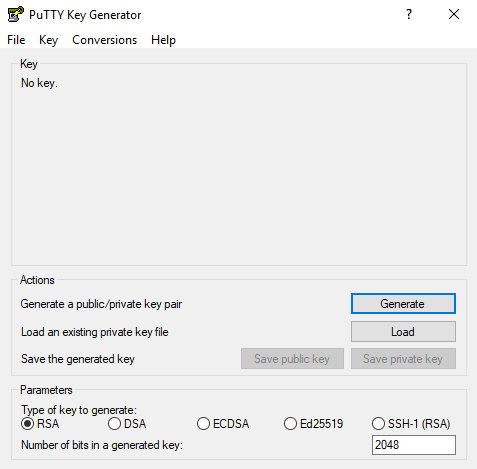
Click on the buttons Save public key and Save private key to store the keys on your computer.
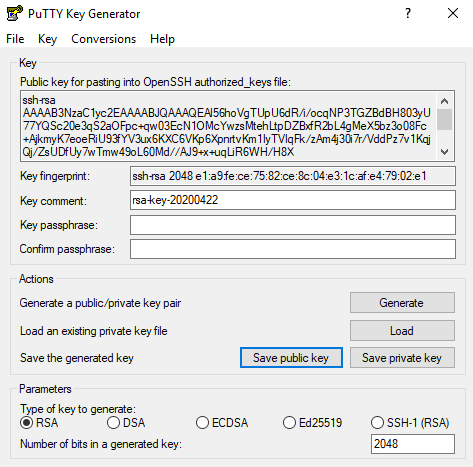
To add an SSH Key for your SSH User click on the user and click on the button Add SSH Key.
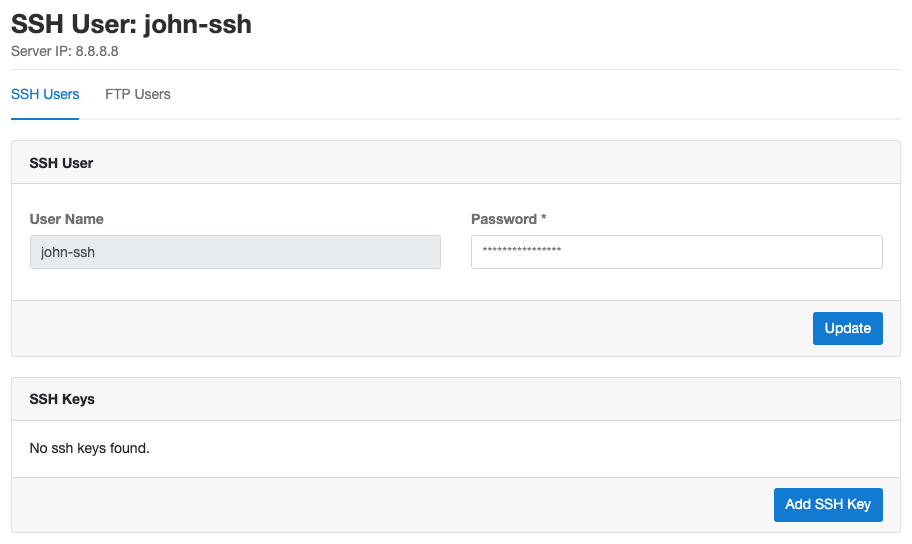
Enter the Key Name and the Public Key and click on the button Add SSH Key to authorize the key.
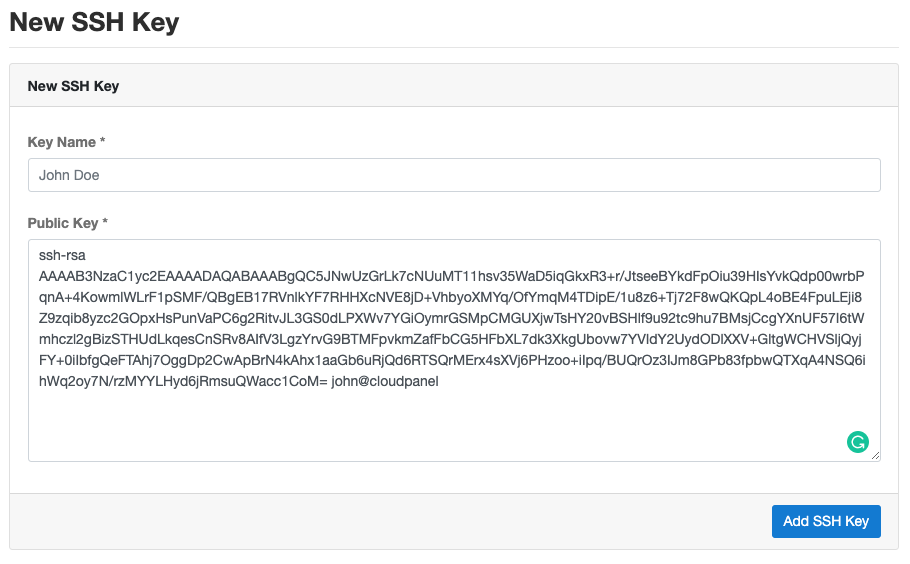
If you have generated your keys with puTTYgen, you need to enter the Public Key as OpenSSH format.
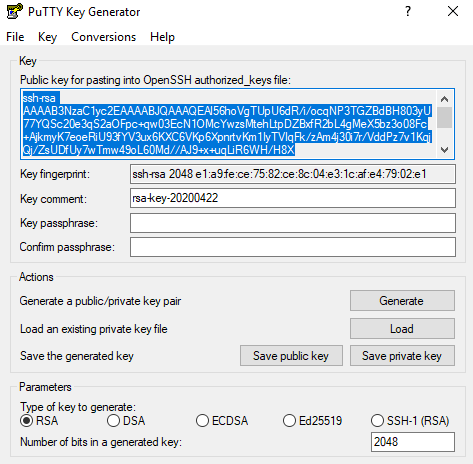
SSH Login
To login via SSH to the server, you need a terminal like iterm2 for macOS or putty for Windows.
The SSH port is 22 (default port). Before you try to connect with SSH, make sure that the port 22 is open for your ip address.
Linux and MacOS:
SSH login via password
SSH login via private key
Windows:
In the Host Name field enter the server ip address and click on the button Open.
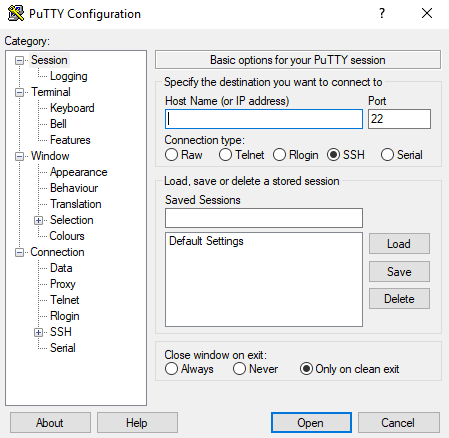
In the next step, putty will ask you to enter the User Name and Password.
SFTP Login
To login via SFTP to the server, you need a client like FileZilla.
Make sure that the SSH port 22 is open for your ip address.
Fill out the Host, Username, Password and Port fields and click on the button Quickconnect.
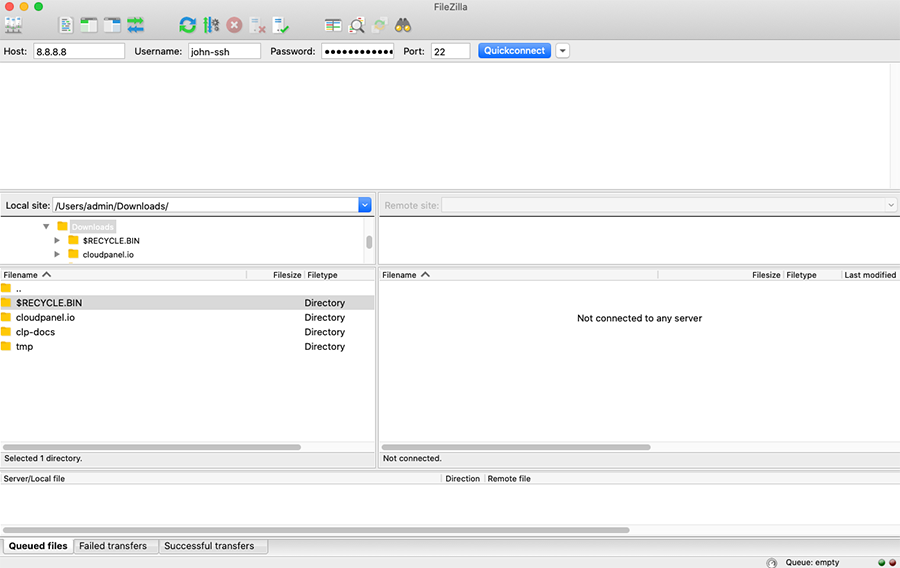
Port
Make sure to use the port 22 for a SFTP connection.
FTP
The File Transfer Protocol (FTP) is a standard network protocol used for the transfer of computer files between a client and server on a computer network.
Adding a User
To add a new FTP User click on the tab FTP Users and then on the button Add User top right.
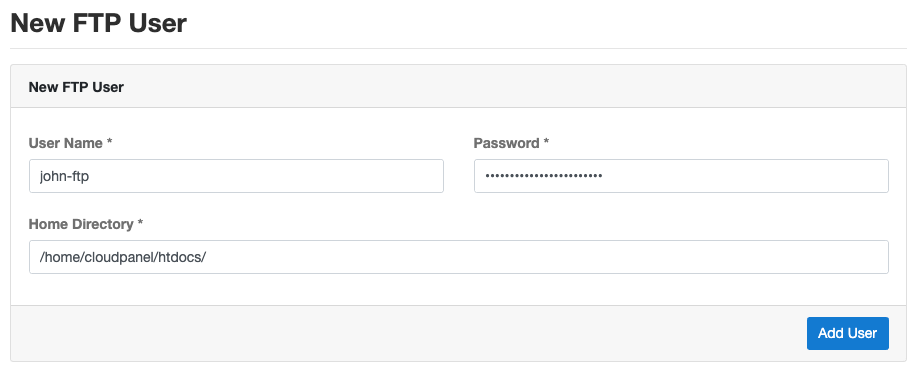
Enter a User Name and a strong Password. CloudPanel automatically adds the suffix -ftp at the end of the User Name to prevent conflicts with system users. The Password needs to be at least six characters long; the longer, the better.
Deleting a User
To delete a FTP User click on the button Delete on the overview page.

Password Change
The password for a user can be changed in the user view. Enter your new password and click on the button Update.
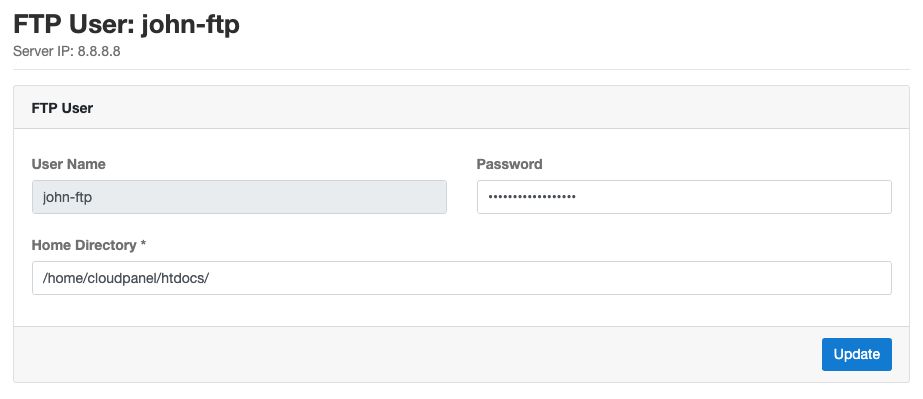
The password can also be changed on the command line.
After login with SSH, switch the user to root and enter the following command:
FTP Login
To login via FTP to the server, you need a client like FileZilla.
Make sure that the FTP ports 20-21 and the passive ports 49152-65534 are open for your ip address.
It is also important that you have set the MasqueradeAddress in the Admin Area.
Fill out the Host, Username, Password and Port fields and click on the button Quickconnect.
